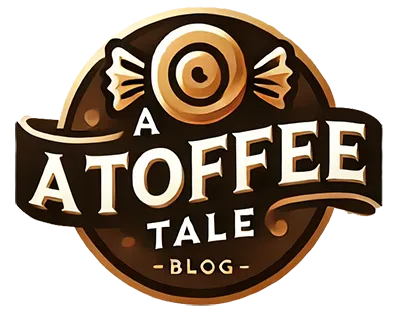Can Dogs Eat Pirates Booty? Risks and Benefits for Your Dog-2024

Can Dogs Eat Pirates Booty? Pirates Booty is a popular snack that many people enjoy for its cheesy, puffed goodness. This treat stands out with its light, crunchy texture and savory flavor, making it a favorite choice for snacking. The snack is made from a blend of cornmeal, rice, cheese, and various seasonings, which come together to create its distinctive taste.
Its widespread popularity among humans sometimes leads pet owners to wonder if it’s okay to share this snack with their dogs. While the idea of giving your dog a taste of Pirates Booty might be tempting, it’s important to understand how its ingredients could affect your pet’s health before doing so.So join us as we will explore whether can dogs eat pirates booty or not.
Nutritional Content of Pirates Booty
Pirates Booty is a popular snack for humans, but its nutritional profile and ingredients raise several concerns when considering it for dogs. But we must think that-Can Dogs Eat Pirates Booty?Here’s a detailed look at its nutritional content and how it compares to what is suitable for canine dietary needs.
Breakdown of Calories, Fat, and Sodium Levels
Calories:
- Per Serving: A typical serving size of Pirates Booty (1 ounce or approximately 28 grams) contains about 130 calories.
- Concerns: These calories can add up quickly, potentially contributing to weight gain and obesity if given in excess, especially considering dogs’ generally lower daily caloric needs compared to humans.
Fat:
- Per Serving: Pirates Booty contains approximately 6 grams of fat per ounce.
- Concerns: High fat content can lead to issues such as obesity and pancreatitis in dogs, particularly if the snack is given frequently or in large quantities.
Sodium:
- Per Serving: The sodium content is around 230 milligrams per ounce.
- Concerns: High sodium levels can lead to salt toxicity, causing symptoms such as excessive thirst, frequent urination, and in severe cases, salt poisoning. Dogs are more sensitive to sodium than humans, and even small amounts can be harmful.
Presence of Artificial Flavors and Preservatives
Artificial Flavors:
- Description: Pirates Booty contains artificial flavors to enhance taste.
- Concerns: Artificial flavors can be harmful to dogs, as they might cause allergic reactions or digestive issues. Moreover, these additives often provide no nutritional benefit.
Preservatives:
- Description: The snack includes preservatives to maintain shelf life.
- Concerns: Preservatives can be detrimental to dogs’ health. Some may cause gastrointestinal upset or other adverse reactions. Long-term exposure to these chemicals can also have cumulative effects on health.
Comparison of Nutritional Content to Canine Dietary Needs
Caloric Needs:
- Canine Requirement: Dogs generally need fewer calories per pound of body weight compared to humans. An average dog’s daily caloric intake is based on their size, age, and activity level.
- Implication: The calorie density of Pirates Booty can contribute to excessive caloric intake, leading to weight gain if not monitored closely.
Fat Content:
- Canine Requirement: Dogs require fat in their diet, but it should be balanced and not excessive. High fat snacks can contribute to health issues like obesity and pancreatitis.
- Implication: The fat content in Pirates Booty is higher than what is typically recommended for dog treats, making it an unsuitable choice for regular feeding.
Sodium Levels:
- Canine Requirement: Dogs have lower tolerance for sodium compared to humans. Excessive sodium can lead to health issues, including dehydration and salt toxicity.
- Implication: The sodium content in Pirates Booty exceeds the safe levels for dogs, posing a significant risk.
Artificial Additives:
- Canine Requirement: Dogs benefit from natural, unprocessed foods. Artificial additives provide no nutritional benefit and can cause health issues.
- Implication: The presence of artificial flavors and preservatives in Pirates Booty makes it less suitable for dogs, as it does not align with their nutritional needs.
While Pirate’s Booty may be a popular human snack, its nutritional profile—characterized by high calories, fat, sodium, and artificial additives—does not align well with canine dietary needs. For the health and well-being of your dog, it’s advisable to opt for snacks that meet their specific nutritional requirements and avoid those that could pose risks.
Potential Benefits of Pirates Booty for Dogs-Can Dogs Eat Pirates Booty?
While Pirate’s Booty is generally not recommended as a regular treat for dogs due to its nutritional profile, there are some potential benefits to consider if can dogs eat pirates booty? Here’s a look at the potential advantages:
Low Calorie Content
- Comparison to Other Snacks: Pirates Booty has a lower calorie content compared to some other human snacks, such as cookies or chips.
- Details: Each serving (about 1 ounce or 28 grams) contains approximately 130 calories.
- Benefit: For dogs that are on a calorie-controlled diet or need a low-calorie treat, Pirates Booty may offer a less calorie-dense option compared to more indulgent snacks.
Contains Natural Ingredients
Ingredients:
- Cheese: Contains cheese, which is a natural ingredient. Cheese provides protein and calcium, though it can be high in fat and lactose.
- Cornmeal: Made with cornmeal, a common ingredient in many dog treats.
- Potential Benefit: The inclusion of natural ingredients like cheese and cornmeal can be seen as a positive aspect. However, the cheese content may be problematic for dogs with lactose intolerance.
Occasional Treat Use
- Moderation: When given in small quantities, Pirates Booty might serve as an occasional treat rather than a regular snack.
- Details: Using it as a rare treat can mitigate some of the risks associated with its high sodium and fat content.
- Benefit: An occasional small amount could be used to add variety to your dog’s diet or as a reward in training, as long as it’s not frequent.
Important Considerations
- Portion Control: Even if used occasionally, it’s crucial to limit the amount of Pirates Booty to prevent potential health issues like salt toxicity or gastrointestinal upset.
- Veterinary Consultation: Before incorporating Pirates Booty or any new treat into your dog’s diet, consulting with your veterinarian is essential to ensure it fits within your dog’s overall health plan.
While Pirate’s Booty has some potential benefits as an occasional treat due to its lower calorie content and natural ingredients, it is important to use it with caution. WE must think that-Can Dogs Eat Pirates Booty? The high sodium and fat content, along with the presence of artificial additives, make it a less ideal choice for regular dog treats. Always prioritize treats that align with your dog’s nutritional needs and consult with a veterinarian for guidance on safe snack options.
Risks of Feeding Pirates Booty to Dogs
Pirates Booty, while a popular snack for humans, poses several risks when fed to dogs. So we must learn that-Can Dogs Eat Pirates Booty?Here’s an overview of the potential hazards associated with giving this snack to your pet:
High Sodium Content
- Dehydration: Pirates Booty contains a significant amount of sodium, which can lead to dehydration in dogs. Sodium draws water out of cells and can cause excessive thirst and increased urination.
- Symptoms: Excessive thirst, frequent urination, dry mouth, and lethargy.
- Salt Toxicity: Ingesting too much sodium can result in salt toxicity, which is potentially serious. This condition disrupts the electrolyte balance in the body and can lead to severe health issues.
- Symptoms: Confusion, vomiting, diarrhea, tremors, seizures, and in severe cases, coma.
Risk of Gastrointestinal Issues
- Vomiting and Diarrhea: When we think that-Can Dogs Eat Pirates Booty? we must consider that dogs’ digestive systems are not equipped to handle high-fat, salty snacks like Pirates Booty. Consumption can lead to gastrointestinal upset, including vomiting and diarrhea.
- Symptoms: Vomiting, diarrhea, abdominal pain, and decreased appetite.
- Digestive Discomfort: The combination of high fat content and artificial additives may further irritate the digestive tract, potentially leading to discomfort and long-term issues.
Presence of Artificial Additives
- Potential Health Impacts: Pirates Booty contains artificial flavors and preservatives, which may not be suitable for dogs. These additives can contribute to health problems, including allergies and sensitivities.
- Examples: Artificial colors and flavors may cause allergic reactions or gastrointestinal disturbances.
- Long-Term Effects: Regular consumption of foods with artificial additives can contribute to long-term health issues, including chronic allergies and digestive problems.
Summary of Risks
- High Sodium Content: Can cause dehydration, salt toxicity, and severe health issues.
- Gastrointestinal Issues: Potential for vomiting, diarrhea, and digestive discomfort.
- Artificial Additives: Possible allergic reactions and long-term health impacts.
Can Dogs Eat Pirates Booty? In light of these risks, it is generally advisable to avoid feeding Pirates Booty to dogs. Opt for treats specifically formulated for canine consumption that meet their nutritional needs and are free from harmful additives. Always consult with your veterinarian before introducing new foods into your dog’s diet to ensure their health and well-being.
Recognizing Adverse Reactions in Dogs
Can Dogs Eat Pirates Booty? Ok at first, feeding Pirates Booty to dogs can lead to various adverse reactions. It’s crucial to recognize these symptoms early and take appropriate action to ensure your dog’s health and safety.
Symptoms of Negative Reactions
- Vomiting: A common response to inappropriate or harmful foods. Watch for signs such as frequent or forceful vomiting.
- Diarrhea: Loose or watery stools can occur, indicating gastrointestinal distress.
- Lethargy: Reduced energy levels or unusual tiredness can signal discomfort or illness.
Signs of Salt Toxicity
- Excessive Thirst: Dogs may drink more water than usual to counteract dehydration caused by high sodium intake.
- Increased Urination: Frequent urination is a response to excessive salt, as the body attempts to eliminate the excess sodium.
- Confusion: Behavioral changes, including disorientation or confusion, can be indicative of salt toxicity.
- Seizures: In severe cases, high sodium levels may lead to neurological symptoms like seizures.
When to Seek Veterinary Assistance
- Immediate Symptoms: If your dog exhibits any signs of vomiting, diarrhea, or lethargy shortly after consuming Pirates Booty, consult your veterinarian promptly.
- Suspected Salt Toxicity: If you observe symptoms of excessive thirst, increased urination, confusion, or seizures, seek emergency veterinary care immediately.
- Persistent Issues: Even if symptoms appear mild or subside temporarily, ongoing issues or new symptoms warrant a veterinary evaluation to rule out serious conditions.
Early intervention can prevent more severe health problems and ensure your dog receives the appropriate care. Always think that-Can Dogs Eat Pirates Booty or not and provide your vet with detailed information about the food your dog ingested and any observed symptoms.
Healthier Snack Alternatives for Dogs
When seeking safer snack options for dogs, consider choosing treats that promote health and well-being. Here’s a guide to dog-friendly snacks, including some homemade recipes and tips for maintaining a balanced diet.
Dog-Friendly Snacks and Their Nutritional Benefits
- Carrot Sticks: Rich in beta-carotene and fiber, carrots are low in calories and support dental health by helping to clean teeth.
- Apple Slices: Apples provide vitamins A and C and are a good source of fiber. Ensure the apple slices are seedless, as seeds can be toxic.
- Blueberries: Packed with antioxidants, fiber, and vitamins, blueberries are a nutritious treat that supports overall health.
- Green Beans: Low in calories and high in fiber, green beans are a good option for weight management and digestive health.
- Plain Greek Yogurt: A source of calcium and protein, plain Greek yogurt is beneficial in moderation. Choose varieties without added sugars or artificial sweeteners.
Homemade Treat Recipes with Safe, Natural Ingredients
Peanut Butter and Pumpkin Dog Treats
- Ingredients:
- 1 cup pure pumpkin puree
- 1/2 cup natural peanut butter (xylitol-free)
- 1 1/2 cups whole wheat flour
- Instructions:
- Preheat the oven to 350°F (175°C).
- Mix the pumpkin puree and peanut butter in a bowl.
- Gradually add the flour, mixing until a dough forms.
- Roll out the dough and cut into shapes using cookie cutters.
- Place on a baking sheet and bake for 20 minutes or until firm.
- Cool completely before serving.
Apple and Carrot Biscuits
- Ingredients:
- 1/2 cup finely grated carrots
- 1/2 cup finely chopped apple (seedless)
- 1 cup whole wheat flour
1/4 cup water
- Instructions:
- Preheat the oven to 350°F (175°C).
- Combine grated carrots, chopped apple, and flour in a bowl.
- Add water gradually until a dough forms.
- Roll out the dough and cut into desired shapes.
- Bake for 15-20 minutes until biscuits are firm and golden.
- Let cool before serving.
Tips for Choosing Healthy Treats and Maintaining a Balanced Diet
- Read Labels: Check for natural, wholesome ingredients and avoid treats with artificial additives, excessive sugars, or preservatives.
- Moderation: Treats should comprise no more than 10% of your dog’s daily caloric intake to maintain a balanced diet.
- Variety: Incorporate a range of healthy treats to ensure your dog gets diverse nutrients and avoid nutritional imbalances.
- Consult Your Vet: Before introducing new treats, especially if your dog has specific dietary needs or health conditions, consult your veterinarian to ensure they are appropriate.
By choosing healthy snacks and maintaining balanced treat-giving practices, you can help support your dog’s overall health and well-being.




